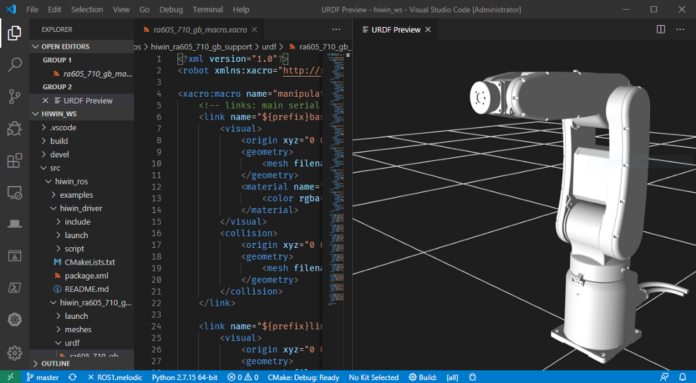A decade ago, while starting our PhD studies at Stanford, my partner and I found ourselves searching for a robotics project that could break new ground. We soon discovered a recurring issue: innovators in robotics were spending nearly all their time reworking existing code rather than focusing on true innovation. This realization led us to develop what we envisioned as the “Linux of Robotics”—a platform that would free researchers and developers from reinventing the wheel.
Identifying a Critical Need
During our early conversations with experts and researchers, we noticed a persistent pattern: teams were devoting around 90 percent of their efforts to reimplementing earlier work and only a small fraction to original innovation. This inefficiency was at the heart of our motivation. Our solution, which we initially called the Stanford Personal Robotics Program, was to create a standardized, open-source software framework and hardware platform that multiple universities and research labs could use. The idea was to build 10 identical robots and assemble a team of engineers to develop the essential “plumbing” of robotics software, allowing innovators to concentrate on new ideas.
Building Credibility and Early Funding
With an ambitious goal in sight, we set out to raise approximately US $4 million to fund our vision. As young graduate students with little credibility, our initial pitch met with skepticism. In fact, our very first check was for a modest sum of $50,000, accompanied by advice to build as much credibility as possible. Using that seed funding—and additional support from key figures at Stanford—we built our first prototype, PR1. This prototype not only demonstrated the potential of our vision but also served as a powerful tool to showcase our ideas through live teleoperation demonstrations and compelling videos.
Embracing Ambition Despite Skepticism
Throughout our fundraising efforts, we repeatedly encountered doubts about the boldness of our goal. Many deemed the idea of creating the “Linux of Robotics” overly ambitious, labeling it as “crazy.” However, we persisted, driven by our belief in the transformative potential of an open, shared robotics platform. Our breakthrough came when we met Scott Hassan, a pioneer known for building innovative internet companies with open-source software. His passion for “paying it forward” aligned perfectly with our vision, and his support played a crucial role in securing significant funding at Willow Garage.
The Transformation at Willow Garage
At Willow Garage, our vision began to take shape. We joined a community of world-class engineers, researchers, and industry experts who shared our enthusiasm. Key team members, including Ken Conley, Brian Gerkey, Morgan Quigley, Melonee Wise, and Leila Takayama, among many others, helped steer the project towards what would become ROS 1.0.
To build a robust community around ROS, we actively reached out to leaders from existing open-source robotics projects. We hosted a two-day workshop, inviting them to help shape a new software architecture that combined the best features of their systems while ensuring clean licensing—a principle that had contributed to Linux’s success. This collaborative effort fostered a deep sense of investment among these early contributors, many of whom would later become evangelists and major contributors to ROS.
Empowering Innovation Through Collaboration
Another cornerstone of our approach was an extensive intern program. Over 18 months leading up to the release of ROS 1.0, more than 100 interns—from PhD candidates to seasoned industry engineers—worked side by side with our team. Their hands-on experience not only accelerated development but also highlighted areas where ROS could improve. This close collaboration with users helped refine every tool and library, ensuring that ROS was both powerful and accessible.
A Decade of Impact
The subsequent years exceeded our wildest expectations. ROS transformed the way robotics research was conducted, dramatically reducing redundant efforts and enabling reproducible, collaborative innovation. Entrepreneurs built successful businesses on top of ROS, and large-scale industrial systems were coordinated using the platform. The creation of the Open Source Robotics Foundation ensured that ROS would continue to be nurtured and evolve within a vibrant global community.
To everyone involved in the ROS ecosystem—whether you’re part of groundbreaking academic research or leading innovative industry projects—your work continues to inspire. For those still chasing their “crazy” ideas, remember that what starts as an audacious dream can eventually reshape an entire field.
Keep pushing boundaries, and let’s continue to build the future of robotics together.





